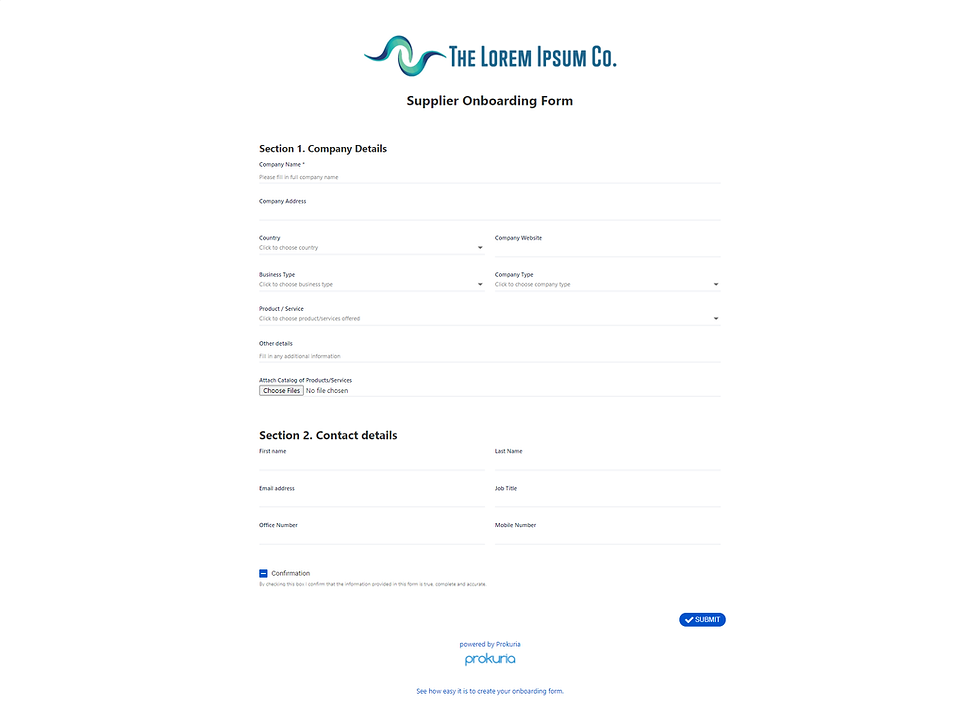How To Create An Efficient Vendor Registration Form
- Alina
- Nov 26, 2020
- 3 min read
Updated: Mar 4
Table of contents

We made a quick summary of the article in case you don't have time to read it all, here it is:
Purchasing departments buy various types of goods and services. However, whenever you’re buying something, you may not always be aware of all the vendors that provide a particular product. And that’s when a vendor registration form comes in handy.
Chances are you only know a handful of vendors. This means that, whenever you’re organizing a sourcing event, you get the same vendors bidding for the same products, probably for the same prices, every single time. There’s no diversity in that and you might be missing out on business opportunities.
Having a database of vendors that offer various types of goods and services means that, whenever you’re ready to buy something, you’ll be able to invite more suppliers to join your event. This can create more competition between vendors, which will ultimately drive down acquisition costs and ensure increased product quality.
So where does the vendor registration form fit in? First, let’s see what it is.
What is a vendor registration form?
A vendor registration form is a document used to gather information from suppliers. Traditionally, vendors’ information was collected and stored on paper, but today, procurement software makes this process a lot easier.
Before you start drafting your supplier registration form, however, there are some things you need to know:
How to create a vendor registration form
Decide on the information you wish to gather. The final goal of vendor onboarding is moving prospective suppliers through each stage of the procurement cycle, from the initial supplier data collection to the signing of the final contract and management of suppliers.

Once you’ve established your selection criteria, the vendor registration form itself should follow your onboarding checklist:
An initial evaluation
Qualification and approval
Data management
Regular reviews
There is no such thing as one-template-fits-all when it comes to supplier registration forms as each organization is unique. However, you can use this template as a starting point and adapt it to your organization’s needs.

Best practices for drafting vendor registration forms
Vendor onboarding means that your organization and your suppliers’ companies familiarize with each other - information and expectations are laid out and approved.
For a smooth process, it’s best to keep in mind the following:
Prequalify vendors to prevent fraud - for the vendor registration form specifically, this means asking for addresses, certifications, and registration numbers so you can rest assured the company you’re doing business with is legitimate
Communication is key - make sure the employees who will deal with suppliers, as well all the stakeholders in your suppliers’ companies are aware of the timelines, goals, and benefits of the vendor onboarding process
Be proactive - your suppliers might not be as enthusiastic about your processes as you are, and that’s why it’s important for your employees to be up to date with all the details so they can follow up with suppliers. Additional training can also prove useful - you should provide FAQ pages, video tutorials, and or knowledge bases
Keep the vendor registration form simple - as much as the vendor onboarding process is important and you should collect all the necessary information, try to keep the form as simple as possible.
Why you should invest in technology
Paper-based procurement is error-prone. That’s why it’s crucial to digitally transform your organization by taking advantage of automation and artificial intelligence. These new technologies can help you power up your processes, remove human error, and free your staff from repetitive tasks to focus on high-value assignments that require a human touch.
Cloud-based procurement platforms can help you streamline your supplier onboarding process by moving all your data to a secure and shared space in the cloud, with real-time, complete, and transparent access for all stakeholders.
Moreover, these platforms can be integrated with your purchasing and accounting systems so you can easily onboard new suppliers, ensure your buyers are getting the best payment terms from the moment your supplier list is updated, and eliminate underperforming vendors.
Comentários